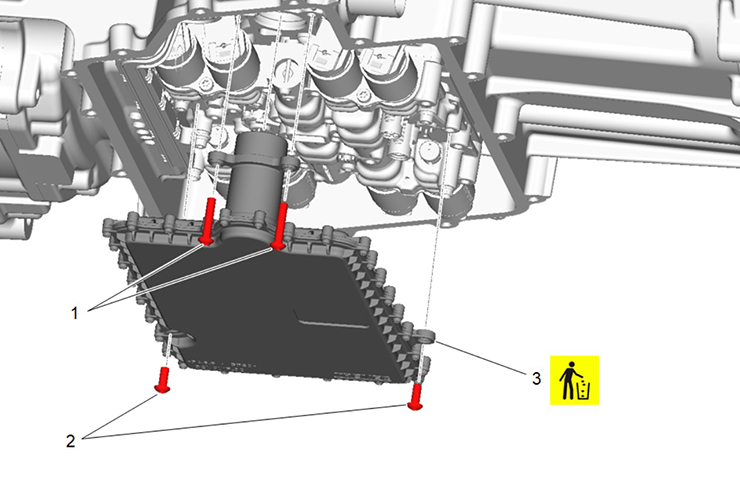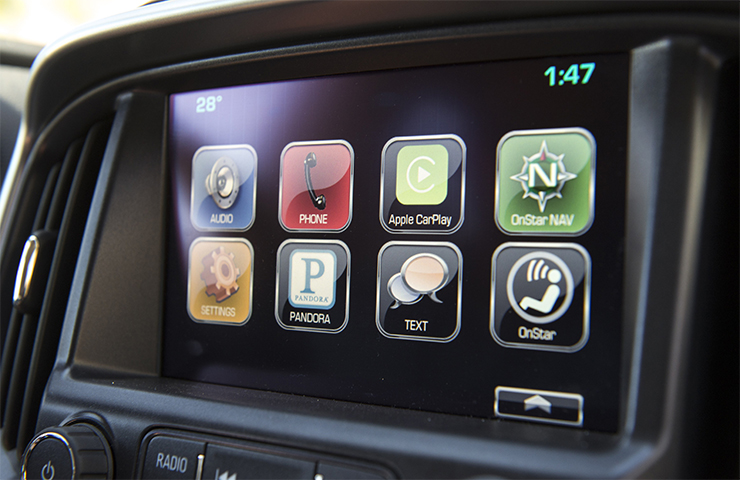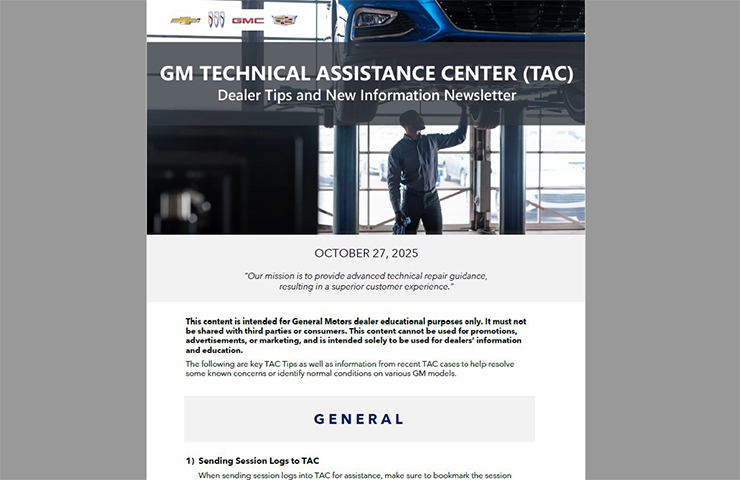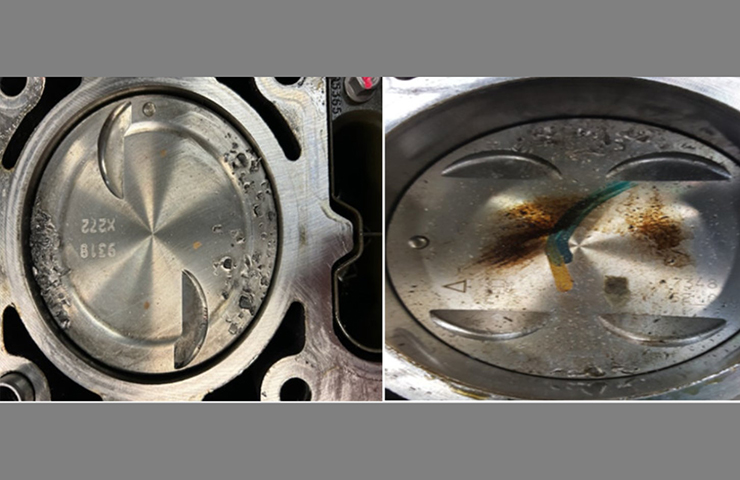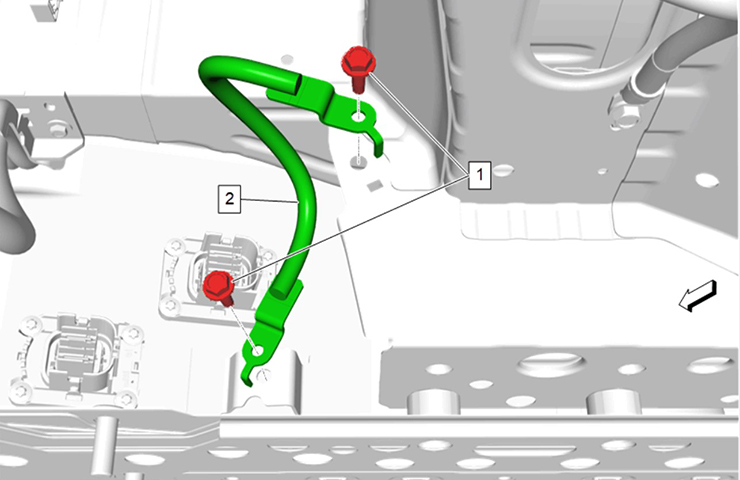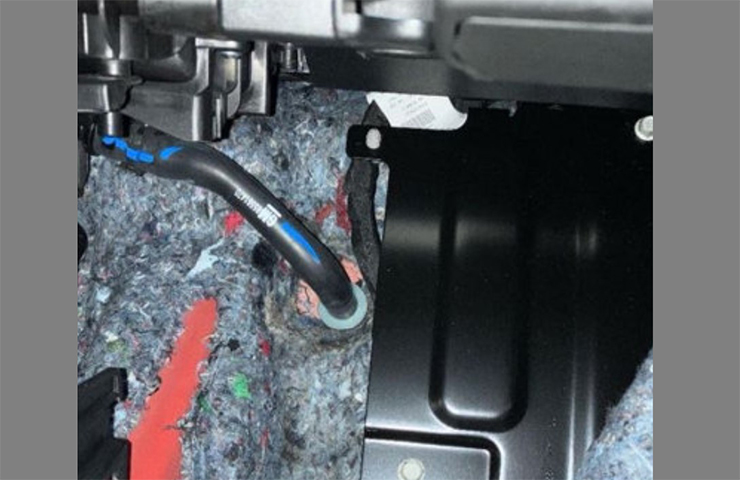Driving through mud, snow or rain on dirt, sand or dry pavement? Depending on the particular road conditions, what’s the best drivetrain choice – two-wheel drive, four-wheel drive, all-wheel drive? As four-wheel drive and all-wheel drive systems have become more popular, it’s important that customers understand the capabilities as well as limitations of these performance features when reacting to current road or weather conditions. (Fig. 1)
 Fig. 1
Fig. 1
New Video Resource
To help customers’ understanding of these systems, GM has released a new video, How to Operate Four-Wheel Drive (4WD), that is now available on YouTube. (Fig. 2)
Dealerships are encouraged to share the video with new customers during vehicle delivery and with existing customers when they bring their vehicle in for service or maintenance.
It covers the various four-wheel drive settings on GM vehicles, operating features, and when each setting should be selected, depending on road and weather conditions. (Fig. 3)
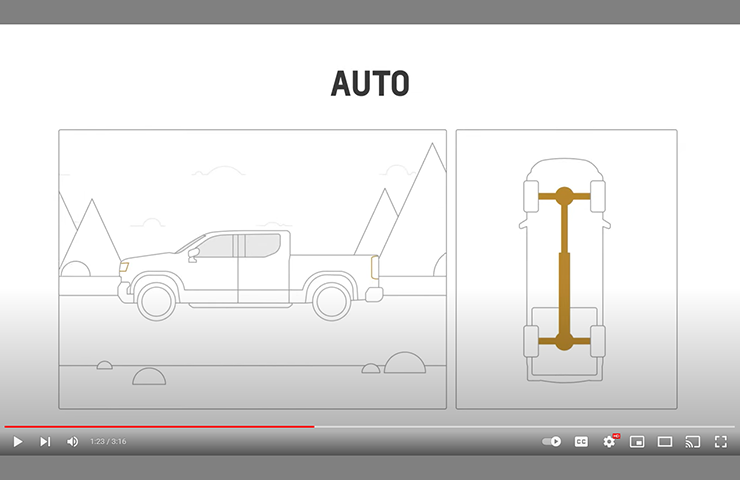 Fig. 3
Fig. 3
A better understanding of the four-wheel-drive or all-wheel drive capabilities of a vehicle may help in reducing Customer Concern Not Duplicated (CCND) warranty claims as a result of customers choosing the wrong transfer case mode for the road conditions. For example, selecting Four-Wheel Drive High (4HI) while driving on dry pavement may result in poor handling and a vibration in the steering system as the system tries to overcome the additional traction and lack of tire slippage.
Using the Different Four-Wheel-Drive Modes
The typical automatic transfer case (Fig. 4) may have several settings:
Two-Wheel Drive High (2HI) – Use for driving on most streets and highways. The front axle is not engaged. This setting provides the best fuel economy.
Automatic Four-Wheel Drive (AUTO or AWD) – Use when road surface conditions are variable, such as pavement and gravel. When driving with this setting, the front axle is engaged, and the vehicle’s power is sent to the front and rear wheels automatically as needed, based on driving conditions.
Four-Wheel Drive High (4HI) – Use when extra traction is needed, such as when driving on snowy or icy roads, or when off-roading. Power is sent to the front and rear wheels at all times. 4HI is not designed to be used on dry pavement or roads with good traction.
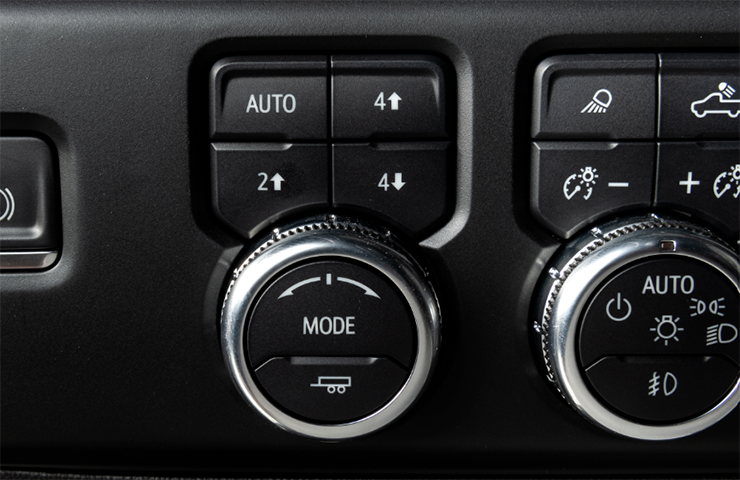 Fig. 4
Fig. 4
Four-Wheel Drive Low (4LO) – Use only when driving off road in deep sand, mud or snow, or when climbing or descending steep hills. 4LO delivers extra torque to the front axle and vehicle speed should be kept below a maximum speed, which varies for different models and equipment. When in 4LO, the traction control and electronic stability control systems will be off. Shift into or out of this mode when the vehicle is stopped or moving less than 3 mph (5 km/h) with the transmission in Neutral.
Neutral (N) – Use only when towing the vehicle. Refer to the Owner’s Manual for specific information about recreational vehicle towing.
Shifts between 2HI, 4HI and AUTO can be made at normal driving speeds. The shift indicator — located on the button or on the Driver Information Center — will flash until the shift has been completed. Once completed, the indicator will remain illuminated. (Fig. 5) If a shift cannot be completed, the transfer case will remain in the previously selected setting.
 Fig. 5
Fig. 5
Extended operation in the wrong four-wheel-drive setting for the current road conditions may damage or shorten the life of drivetrain components and cause the tires to wear faster.
Drive Modes
The drive modes on some models automatically adjust various vehicle control systems based on driving preferences, weather and road conditions. (Fig. 6) In some cases, all-wheel drive may be activated automatically when certain modes, such as Sport mode, are selected.
 Fig. 6
Fig. 6
For example, on some all-wheel-drive vehicles, the AWD button or Mode button (if equipped) must be selected in order to send power to all four wheels. It should be used for enhanced traction during slippery conditions on gravel, wet pavement, snow or ice. Some all-wheel-drive models also may have an Off-Road mode for enhanced control while on unpaved roads.
For additional information, refer to the appropriate Owner’s Manual.
– Thanks to Robert Cross







